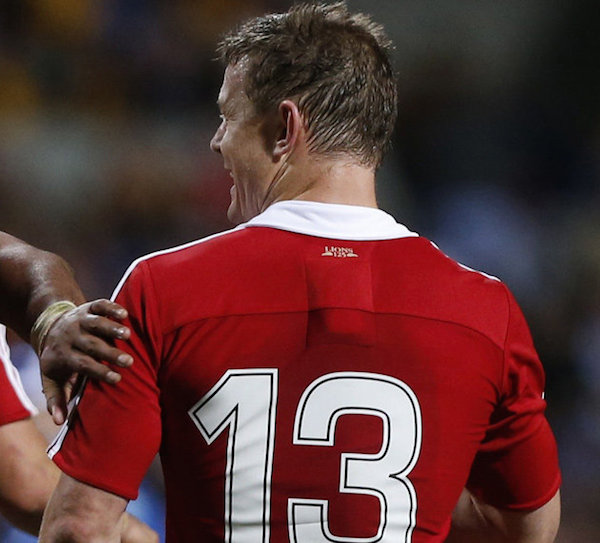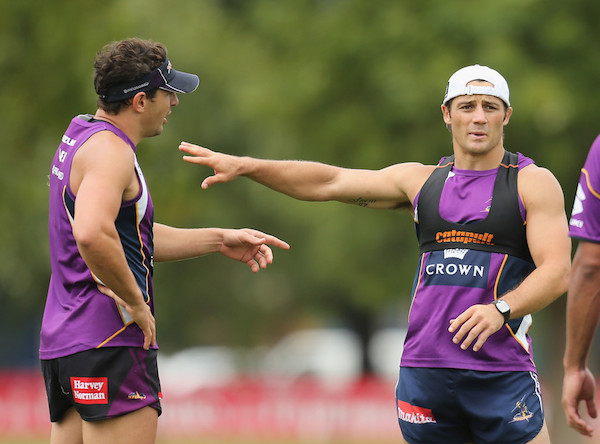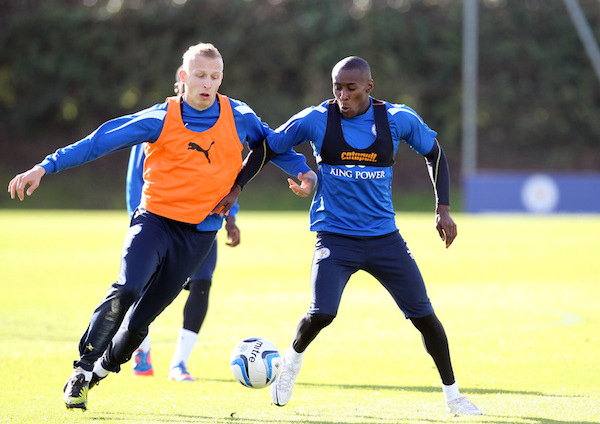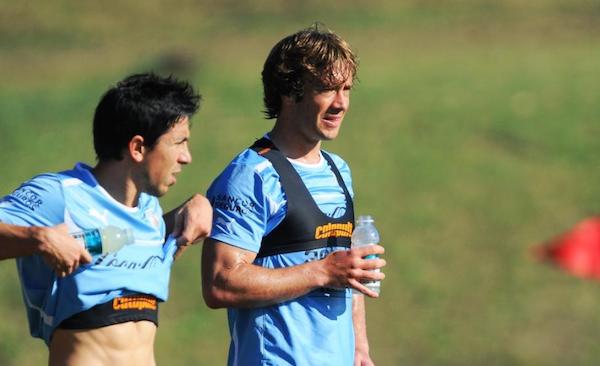How smart PR is helping one Aussie sports tech brand conquer the US market
Share
Catapult, the Australian company that invented GPS and data tracking devices worn by elite athletes to optimise performance, is making big strides towards cornering the cut-throat US sporting scene.
A product of the Australian Institute of Sport and the Cooperative Research Centres, athlete GPS tracking brand Catapult invented the category. And while it may not have been the first to market commercially, it’s currently waging a lengthy campaign to conquer the US market, where big sport is big business.
From the wireless linking of multiple team members to ball tracking, Catapult has made multiple innovations in sports team analytics since 2001, ultimately turning into more of an athlete analytics platform rather than a single product or piece of technology. Over the past decade, measurement that was previously only performed on treadmills in labs have run out onto the field of play, and into real playing environments.
By mapping load on the bodies of athletes in three dimensions, Catapult’s system can analyse complex movements as well as distance and time. Since commercialising the technology for elite sports teams in 2006, soft tissue injuries in the AFL have reduced by 33%, and player performance has improved by 40%. UK expansion was next, including signing up most English Premier League teams.

Why isn’t the United States, where sports is an industry and athletes’ bodies are multi-million-dollar assets, already a mature market for athlete analytics technologies like that of Catapult and its competitors?
Boden Westover, media and marketing manager at Catapult, explains that the US has long had a strong focus on sports analytics, whereas Australia the UK have been more focused on the biometric measurement side of sports science. Typically the US has been more focused on the spreadsheet-heavy economist view of sports analytics, as evident in the recent acquisition by ESPN of FiveThirtyEight, a website about the statistical analysis of sports, economics, politics and science, run by Nate Silver, the analyst and writer who rose to international fame during the 2008 US presidential election, in which he correctly predicted the winner of 49 of the 50 states.
Westover says each market is currently paying more attention towards the area it previously neglected: Australia and the UK are incorporating more US-style statistical analysis and the US is heading towards more physiological sports science.
That was the opportunity for Catapult.

Marketing: So your job was to create buzz around Catapult in the US – where was the business at in the US at that point?
Boden Westover: At that point it was pretty non-existent. We had about three clients and one US employee at the time.
When I started and I was told to generate some Buzz in the US I saw a big gap in awareness of the technology, and even though we weren’t the first to the market in the field, we could still be the first to the buyers mind through the media.
Part of my role, as well, is positioning Catapult as in between the two, analytics and sports science, so as the two converge we’re always in the forefront of that. A lot of people are surprised when I say it wasn’t big in the US at all, because you automatically assume with so many professional teams and college teams with so much money, that they would have been all over it. It’s just been in the last year that it’s grown extremely quickly.
M: Was PR the focus as a necessity or a choice, not having an advertising budget?
BW: A bit of both. We didn’t have that advertising budget, but at the same time all the branding books I’ve read tell you not to launch your brand with advertising, to launch it with publicity and PR. My background was journalism and reporting. Previously I worked as a sub-editor for AAP and I did journalism in uni, so I felt that’s what I knew best, the media, and what a reporter thinks. Just put yourself in their shoes.
M: Journalists are pretty simple, aren’t they, in the sense they’re straight forward and it’s easy to know what they want and what they need?
BW: Yeah, and that’s a big part of public relations I think, is the packaging, a pitch to a story that suits what they’ve written in the past and what they’re interested in. Personally, I’ve never written a press release before, I don’t like to go down that path. I read a couple of articles that a reporter has written, get a feel for what they’re interested in, throw in a few buzz words and how that relates to Catapult and individually pitch a story.
M: No press releases at all?
BW: No, I’ve never been a fan of press releases.
M: How many outlets did you target?
BW: When I first started to put together a PR plan for the US, I kind of drew it like a tree, so blogs and small publications were low and then all the way up to ESPN, Sports Illustrated, USA Today. I started at the bottom, contacted freelance journalists and editors for really small websites just through Twitter or whoever I could get their email address basically. I personalised the approach, and then as we started to get into a few of those smaller publications I used those stories to get to the next level up, so I’m not sure if that’s a text book way to go about public relations.
M: I don’t think it’s a text book way but it is reminding me of Ryan Holiday, who wrote a book called Confessions of a Media Manipulator, and his approach really was to target the small blogs or the blogs, because that’s where the bigger news outlets look for their news.
BW: I’ll have to grab his book.
That was kind of what I was thinking, journalists read more than anyone so if you can get a few things out there in small publications it spreads pretty quickly.
RELATED: ‘Marketing is based on assumptions that don’t ring true anymore’ – Q&A with Ryan Holiday »
M: Do you know how many you ended up pitching to?
BW: I would say dozens. It was all very individualised so I wrote a special email for each person. Early on I think I was sending three a day, contacting three reporters a day. As I said I’m not following any text book here, I’m just going by the feel and it grew from there. I used those stories to get to the next level, and once you get to the top level, the ESPNs, once they write something about you the other blogs automatically pick up those stories and write it themselves.
M: What kind of stories were you pitching? ‘This is cool new tech for sports’, or something on the data, or team success stories…
BW: With the US media I tried to keep it really simple. It was kind of annoying in a way because our company wants to get away from [only talking about] GPS devices because everyone just thinks ‘Catapult: GPS device’, but there’s a lot more going on in the device. It’s not really just GPS, but when you say to a US reporter, ‘NFL players are wearing our GPS devices’, it automatically sparks their interest and you can build a story off that. So I tried to take the approach that my bosses didn’t want me to and to dumb it down for the US reporters just to gain their interest, and any time you say to an American reporter that, ‘It’s like this, but for that’, that always grabs their attention, you can always lead that into a story.
M: Everything’s a combination.
BW: Exactly. We still get that – like Nike Fuelband for elite athletes.
M: That’s an interesting point, because this is happening at the same time as a huge trend of wearable technology at a consumer level, not just for scientific or sports research.
BW: Exactly, yeah. That’s why I can’t really claim any credit because it’s a booming industry right now, and we’ve got the added advantage of being with elite sports, which people are now so interested in.
Timing is the biggest thing for any PR campaign, and each pitch for each story has to have its own timing as well, but overall I could say I was lucky.

M: What was the media impact in America?
BW: Over 300 stories now. We’ve had about, the last time I counted, 17 ESPN articles. When I first started that was my pinnacle, I just wanted to get into ESPN and then once we got in it seemed like it just kept happening.
It also helped that we held an event in February in Boston for a bunch of ESPN reporters. We put a device on each reporter and they played pick-up basketball, and so since February it’s really taken off.
M: So ESPN was the holy grail when you’re starting out?
BW: Yeah. What probably tipped us over the edge was a Forbes article last May. Our chairman, who hasn’t been there much longer than me, has done a great job of growing our brand and our business in general. At that time we were going through series one capital raising and he said, ‘See if you can get us into any financial magazines’, and I found a Forbes writer that was interested in technology and pitched that story, and from there we grew exponentially.
M: What’s Catapult’s involvement at the World Cup at the moment?
BW: We’ve got eight teams. The Socceroos included. Brazil, Uruguay, Croatia, and a few others.
M: How much access do you have to that data from those deals?
BW: Pretty much zero. That’s the tricky part, because when you pitch a story, automatically they want to talk to the team or the person in charge, which is usually difficult especially because the most newsworthy articles are when we sign a new client, and that’s the most sensitive time to be like, ‘Oh we just sold you this, and now can you talk to the media about why you bought it?’ That’s always a bit tricky. But the data itself, because we don’t have access to it, and the reporters want that more than anything, you kind of have to steer them away from that.
M: Well that data would be really valuable to the teams’ competitors so I can imagine why they wouldn’t want to be really generous about sharing.
BW: Especially when it comes to injuries and stuff. If a guy’s coming back to competition after being out for a month, the data will show that he doesn’t push off on one side compared to the other, so you obviously don’t want your opposition to know that sort of stuff.
M: Or the bookies.
BW: The bookies…
M: I was just thinking about the potential for hacking in and how much money it’s worth.
BW: That’s funny you mention that. We get enquiries so often from bookies and agencies about accessing the data, but yeah, contractually we just can’t do that.
But we’re actually working with Channel Seven right now and AFL media, so a limited data set will be available during AFL games, but it won’t be what the bookie would want.
M: What’s next? Do you consider America conquered?
BW: No, definitely not conquered. We’ve got a list of pretty much the whole US market and we’ve tapped into about 6%. College sport, I would say, is the next big frontier. We have about 20 of the major college programs but there are probably about 400 all up. We have about 12 NFL teams, and we’re just trying to get over 50% there – once we hit 17 we’ll have a bit of a monopoly there.
















